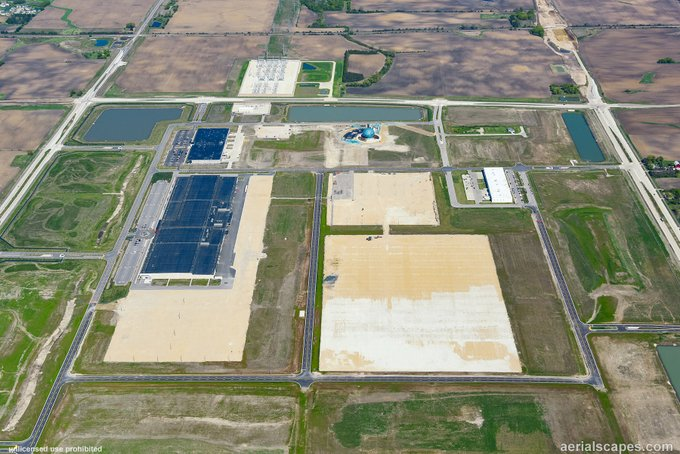Remember the 8th Wonder of the World?
Foxconn originally denied the potential change and then confirmed, indicating that it had always planned on a ‘phased’ production timeline (companyspeak) and would still employ 13,000 people. Foxconn did outfit a few ‘innovation centers’ in Wisconsin, but most remained empty and still do. As the year progressed Foxconn indicated (likely accidentally) that the factory would be highly automated, with 90% of the potential hires being ‘knowledge workers’ rather than factory workers although their goal was still to hire 2,000 employees by the end of 2019 and 13,000 by the end of 2023, and in January 2019, the Foxconn representative indicated that building a TV panel factory ‘would not be competitive’ at that location. Over the next 18 months the company indicated that it would be building a plastic molding factory and packaging plant in Mount Pleasant, but after a discussion between President Trump and Foxconn CEO, the plans for a Gen 6 LCD fab reemerged with a target date of late 2020, and road work and site leveling began, only to grind to a halt as Foxconn missed its hiring goals and Scott Walker, the Republican governor at the time, lost his re-election campaign to Democrat Tony Evers.
While the project foundered, the new state administration began to reevaluate the initial agreement with Foxconn, especially after they missed their 2nd year hiring goal, leaving them with no subsidy relief and questions as to whether they would continue with the project. Fast forward to the end of April of this year when Wisconsin governor Tony Evers renegotiated the Foxconn contract on slightly better terms. The new contract made Foxconn eligible for $80m in performance-based tax credits over 6 years, a bit less than the original 2017 contract which allocated $2.35b in credits (with state and local infrastructure improvements it was closer to $4b), but now only if Foxconn hires 1,454 qualified workers at an average wage of $53,875 and invests $672m by 2026. The contract no longer specifies what Foxconn will be building on the site (the Gen 10.5 fab was specified in the original) as long as it meets the new goals, and the new contract also changes the contract length from 15 years (original) to 6 years, and allows the state to recover 100% of the incentives paid each year in case of a default.
While the renegotiation is certainly the key here, as it saves the state and its taxpayers an enormous amount of money over the next few years, we do take a victory bow, having been extremely doubtful that the project would ever live up to even the reduced expectations. This did not come because we had great insight into the project itself but because Foxconn has done this before, reducing or defaulting on major projects in a number of other countries. While the project was noteworthy in its scope and ability to generate headlines, the cost of display production in the US is relatively high, and even with the higher panel prices seen over the last year, the long-term price of LCD panels follows a downward trend. All in, Foxconn’s own history predicted the outcome.

 RSS Feed
RSS Feed